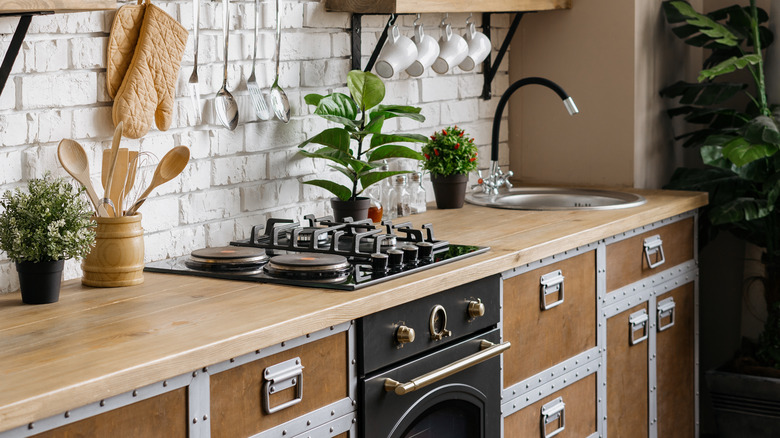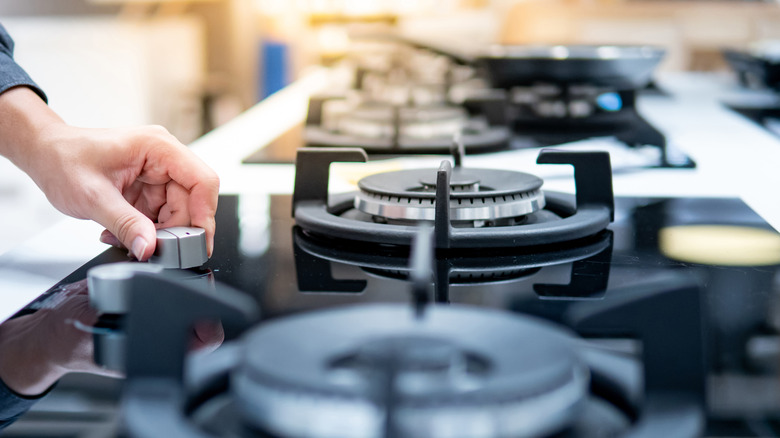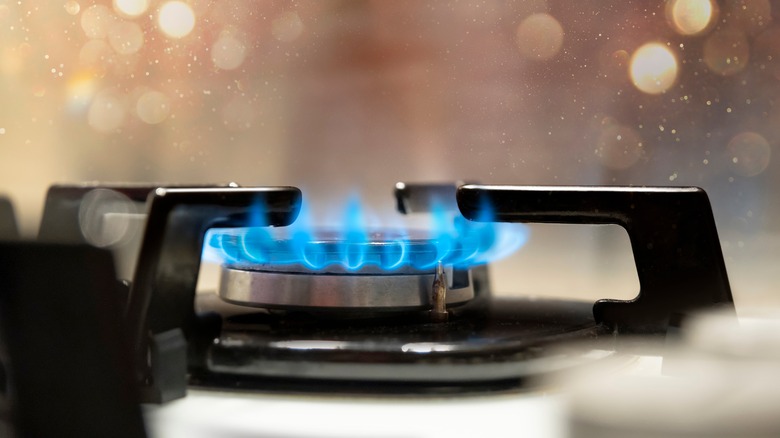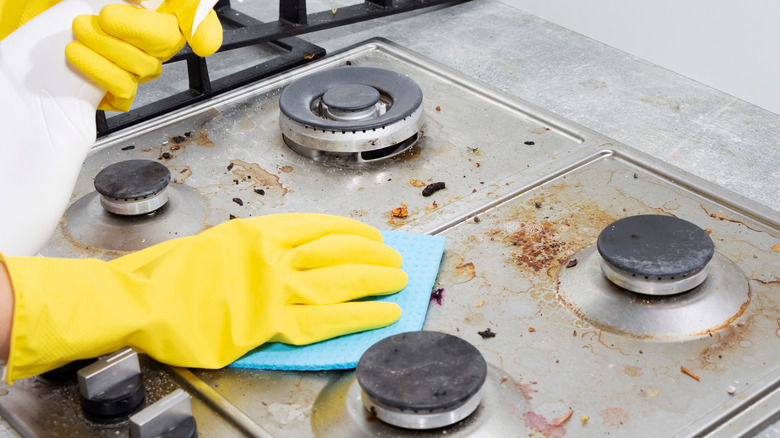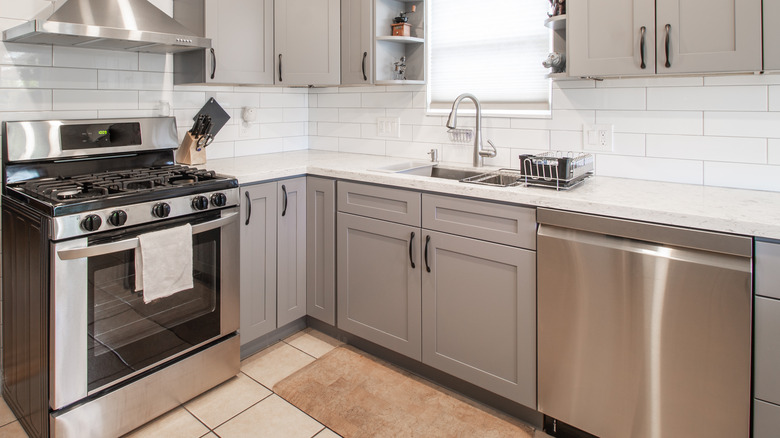Hidden Downside Of Gas Stovetops
We may receive a commission on purchases made from links.
Gas stoves are either loved or hated depending on who you ask. Many people, from home cooks to professional chefs, love the control and effect of an open flame that only a gas stovetop can provide. There are a lot more options for cooking on a gas stove, like charring or blistering food over an open flame. As Best Buy notes, flames add a unique and irreplicable flavor and texture to many foods, making them a favorite for many.
However, gas stoves are not without their drawbacks. Electric stoves exist for a reason, and many prefer them over gas stoves for being cleaner, sleeker, more uniform, cheaper, and, more importantly, much safer. The biggest concern when it comes to gas stoves is just that — gas. Besides safety concerns, gas stoves are harder to clean, more expensive to maintain, and don't always deliver consistent results. Before purchasing your next stove, take a second to consider the downsides of gas stovetops.
They're more expensive
One of the first downsides to gas stovetops is that they're often more expensive. Gas and electric stoves as an appliance actually cost roughly the same amount — both this gas Samsung stove available at Best Buy and the same model but electric at Best Buy cost $849. However, the cost of operating and maintaining a gas range stove is much pricier.
As Hunker notes, to operate a gas stovetop, you need a gas line in your kitchen. If you don't already have one, the cost of installation can be pretty steep, ranging anywhere from $200 to $1,000 if you already have a gas supply, and $3,000 to $6,000 alone for installing a gas line, according to Home Guide.
Some gas stoves don't connect to a gas line at all but to a propane tank, says Best Buy. Propane tanks cost roughly $1,765 to install and $3 to $5 per gallon when refilling, which will need to be done frequently if you cook on a consistent basis, per Home Advisor. Overall, gas stoves are a much pricier option.
Safety hazards
Another major drawback of gas stovetops is safety, as there are a few specific safety concerns involved with gas stovetops. First and foremost is the fact that there's an open flame. While all stoves are dangerous to a degree, an open flame is much more dangerous, especially when kids or pets are involved, notes Best Buy. There's also the concern of keeping common flammable kitchen items, like kitchen towels, aerosol containers, oil, and more, nearby.
Another huge safety concern for gas stoves is a gas leak. Gas stoves usually have knobs on the front used to ignite them, but the flame doesn't always catch. In attempting to ignite the flame, you can fill your house with harmful, toxic gas. It's also possible to bump up against one of the knobs and not realize you've turned the gas on. At best, this will lead to feeling sick, weak, nauseous, or severe headaches, explains Snell Heating & Air. At its worst, this can lead to long-term illnesses, death, a house fire, or an explosion. Lastly, there's the possibility of carbon monoxide poisoning. Hunker recommends you purchase and install a carbon monoxide detector with your gas stove for safety.
Difficult to clean
A less serious, but nonetheless annoying, problem to deal with when it comes to gas stovetops is cleaning. Electric stoves are very easy to clean, since they're usually flat and only contain one material. Gas stoves, on the other hand, tend to get dirtier a lot quicker, there is more than one material to deal with, and it isn't flat.
When it comes to cleaning gas stoves, Hunker notes that it's much more difficult to clean the coils of a gas stove than it is to clean a ceramic electric stove. Cleaning gas stoves can also be dangerous. To clean a gas stove, you have to remove the iron grate on top. If your stove is still hot, touching this iron can result in some pretty serious burns. There's also the risk of the gas coming on while you're cleaning and creating a fire hazard around the cleaning chemicals and flammable rags, explains HGTV. The cleaning process is in no way simple or easy, especially when compared to electric stoves.
Uneven oven cooking
Finally, while gas stovetops are often lauded for the unique effect they have on food, they aren't always the best option. Flames, while arguably better for the taste and texture of your food, aren't always as consistent or evenly distributed as an electric stovetop. If there's even the slightest slant, your food can burn or cook unevenly.
Another concern with gas stovetops is the effect they have on your oven. According to Best Buy, if you have an oven connected to your gas stove, there's often extra moisture in the oven itself. This can lead to baked items becoming burnt or crisped easier. Gas stoves and ovens are often praised for how quickly they heat up, and while that's true, that can also lead to unwanted temperature fluctuations, hot spots, or food quickly browning or burning.
While gas stovetops are certainly loved by many and come with their own set of advantages, you should also take time to seriously consider their disadvantages before making such a large and permanent purchase for your home and kitchen.
